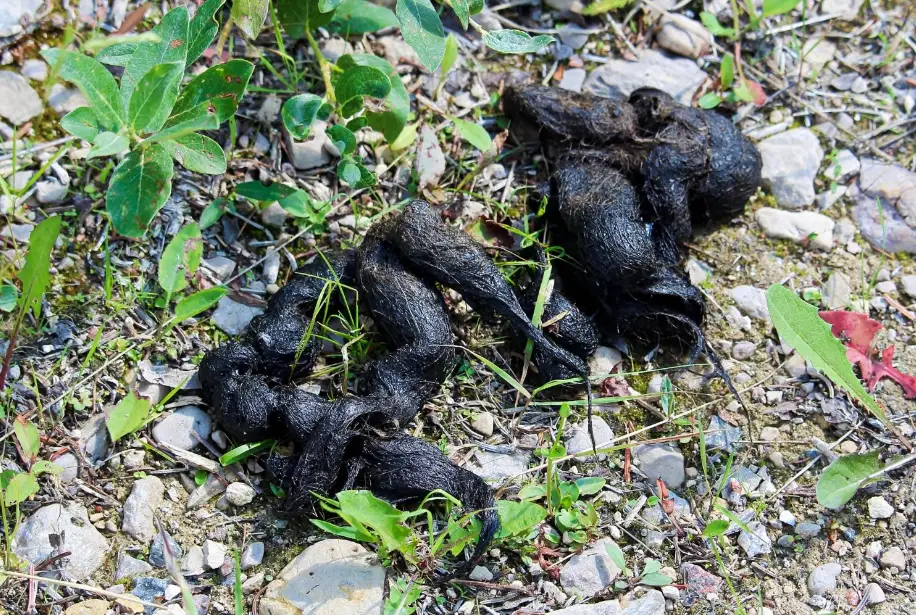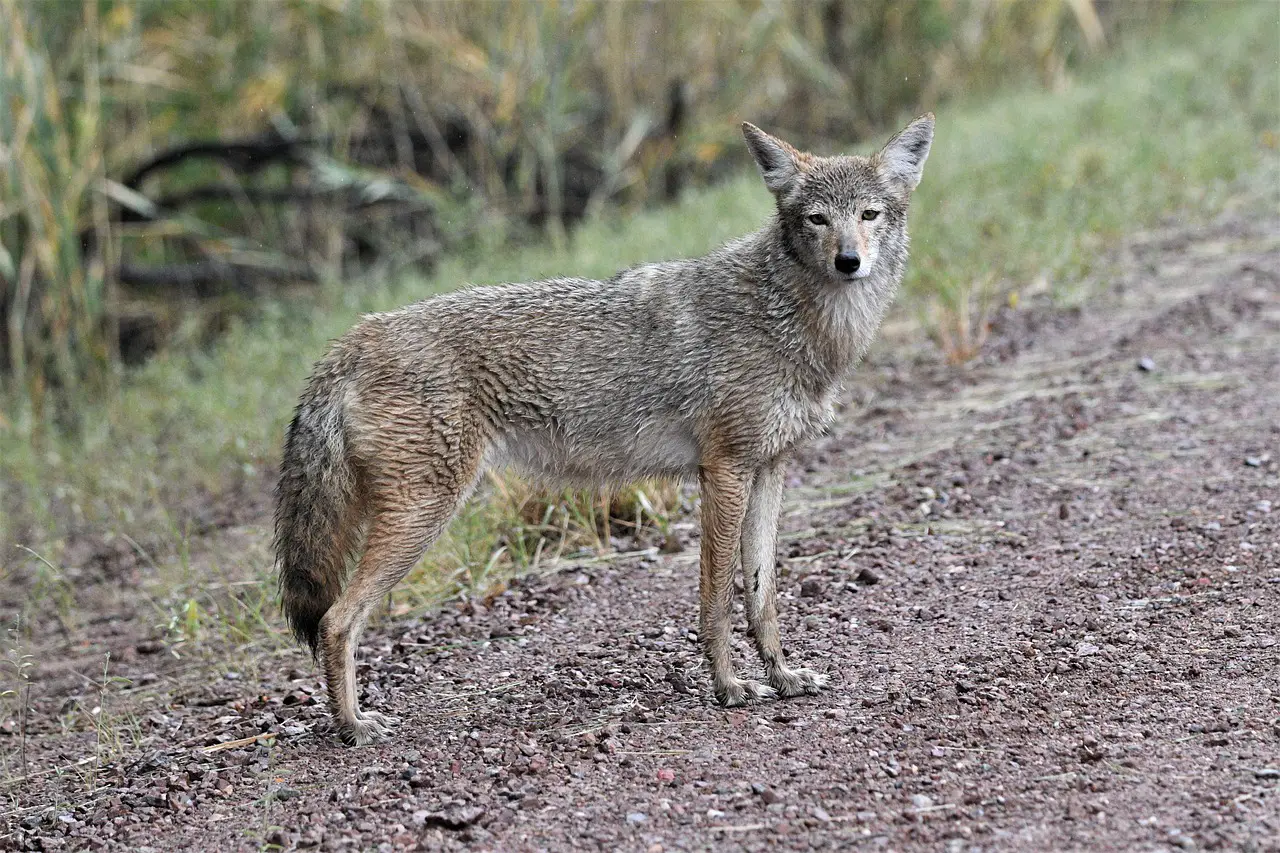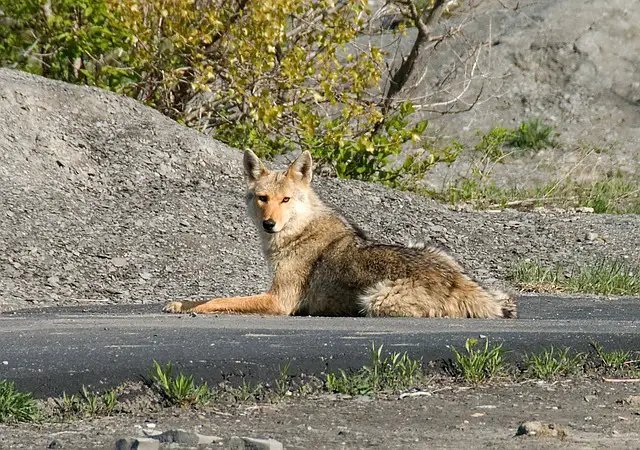Coyotes are fascinating creatures that roam across various habitats, including forests, deserts, and urban areas. If you’ve come across coyote poop while exploring the outdoors or near your property, you may be curious to know more about it. So, What Does Coyote Poop Look Like? In this article, we will delve into the world of coyote scat, discussing its appearance, contents, and how to identify it.
You may also want to know what snake poop looks like.
Identification
Size
What Does Coyote Poop Look Like? Coyote poop can vary in size, depending on the individual and their diet. On average, it is roughly the size of a medium dog’s scat, ranging from 3 to 5 inches in length and around 1 inch in diameter.
Shape
Coyote scat typically has a tubular shape with slightly tapered ends. It may appear twisted or segmented, indicating the passage of different meals through the digestive system.
Color
The color of coyote poop can vary based on their diet. It commonly ranges from dark brown to grayish-black, but you may also come across lighter shades depending on the contents of their recent meals.

Contents of Coyote Poop
Size
What Does Coyote Poop Look Like? Coyote scat is typically composed of various organic materials. You may notice the remains of bones, fur, feathers, and plant matter, depending on the coyote’s diet and recent meals.
Texture
The texture of coyote poop can be somewhat lumpy or segmented due to the presence of undigested food particles. It is often firm and compact, reflecting the efficient digestion process of these canines.
Color
The color of coyote scat is influenced by the pigments present in the food they consume. It can range from dark brown to black, with occasional lighter tones if the coyote has been eating a diet rich in plant matter.
Factors Affecting Poop Appearance
Several factors can influence the appearance of coyote poop:
Diet
Coyotes are opportunistic feeders and have diverse dietary preferences. Their scat will reflect the food sources available to them, including small mammals, birds, fruits, insects, and vegetation. This variation in diet contributes to the different colors and contents found in their poop.
Habitat
The habitat in which coyotes reside can also affect the appearance of their scat. In more urban environments, their diet may include human-made food waste, leading to different colors and textures in their feces compared to those in rural areas.

Health
The overall health of a coyote can impact the appearance of their poop. Digestive issues, parasites, or illnesses may result in changes in color, consistency, or the presence of abnormal substances in their scat.
Identifying Coyote Poop
What Does Coyote Poop Look Like? To identify coyote poop accurately, consider the following characteristics:
- Look for scat that resembles dog feces but is smaller and less uniform in shape.
- Notice the presence of fur, bones, or plant matter in the scat, indicating the coyote’s diet.
- Pay attention to the size, shape, and color described earlier to distinguish it from other animals’ droppings.
Safety Considerations
While exploring outdoors and encountering coyote poop can be intriguing, it is essential to remember a few safety considerations:
- Avoid touching or handling coyote scat directly, as it may contain bacteria or parasites.
- Keep your distance if you come across fresh scat, as coyotes may be nearby.
- If you frequently encounter coyote scat near your property, take measures to deter them to minimize potential conflicts.
Conclusion
Coyote poop, like that of many other animals, provides valuable insights into their diet, habits, and presence in an area. By understanding the characteristics of coyote scat, you can enhance your knowledge of these elusive creatures and better appreciate the natural world around you.
Frequently Asked Questions (FAQs)
- Is coyote poop dangerous? Coyote poop itself is not inherently dangerous, but it may contain bacteria or parasites. It is advisable to avoid direct contact with it and practice good hygiene if you come across coyote scat.
- Can you tell if a coyote is healthy based on its poop? The appearance of a coyote’s poop can provide some indication of its health. Any significant changes in color, texture, or presence of abnormal substances may warrant further observation or consultation with wildlife experts.
- Can you determine the age of coyote scat? It is challenging to determine the age of coyote scat accurately without additional context or evidence. Fresh scat is usually moist and has a distinct odor, while older scat may appear dried out and more weathered.
- Are coyotes territorial based on their poop markings? Coyotes use scent marking, including their poop, to communicate and establish territory. However, interpreting territorial boundaries solely based on poop markings can be challenging without considering other factors such as vocalizations and behaviors.
- What should I do if I find coyote poop near my property? If you frequently find coyote poop near your property and are concerned about potential conflicts, it is advisable to consult local wildlife authorities or experts for guidance on effective deterrent measures.
